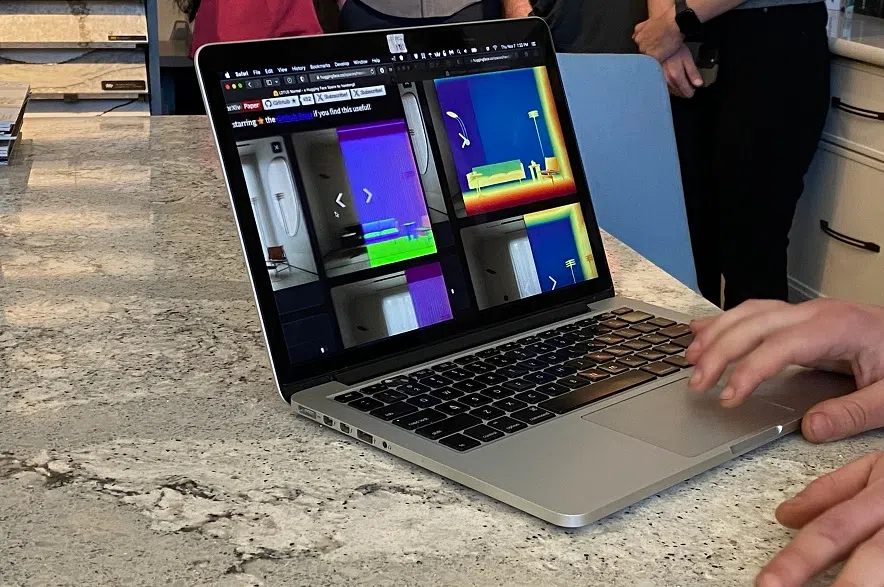Metric Design in Saskatoon is partnering with Saskatchewan Polytechnic’s Digital Integration Centre of Excellence (DICE) for a homegrown AI project.
The partnership will see two programs created — a year-long digital twin project that will scan a room and create a digital twin of the space, and a three-year AI project that will simplify and shorten the process of grabbing materials a designer would use for the room.
Read more:
- Ground broken for ‘revolutionary’ Sask. Polytech campus in Saskatoon
- Nutrien donates $15 million toward new Saskatchewan Polytechnic campus
“We have a lot of specifications and selection processes that take a lot of time, and can create lots of errors,” said Tamara Bowman, Metric Design creative director. “This is actually going to .. help with the auto selection process.”
This means that a designer would use AI to help them simplify the selection process. Bowman said this would also save the consumer money.
“It will cost less if they (the consumer) are working with a designer,” said Bowman. “The average project and the time involved in the specification process is about 20 hours … we would be able to really simplify that time down to a fraction of what that might be.”
Bowman said most designers charge by the hour, and rates are around $100 to $200, so cutting that process down would see more money in the customer’s pocket.
DICE and Metric Design received multiple Applied Research and Development grants, from the Natural Sciences and Engineering Research Council of Canada (NSERC) and Mitacs for the AI project, with $150,000 from NSERC and $75,000 from Mitacs per year for three years.
An extra $40,000 from NSERC and $15,000 from Mitacs will be used for the digital twin project.
Bowman says no human jobs would be lost as a result of the projects.
Students are also involved with the project and Cyril Coupal, research manager at DICE, explained what they would be doing.
“It’ll be everything from writing software scripts to running AI modelling,” said Coupal. “(Then) test the models to see how well they perform, go back, change the data, run the models again — (it’s) a very repetitive process and takes a lot of time.”
It will be three years before everything is up and running.
Read more:












